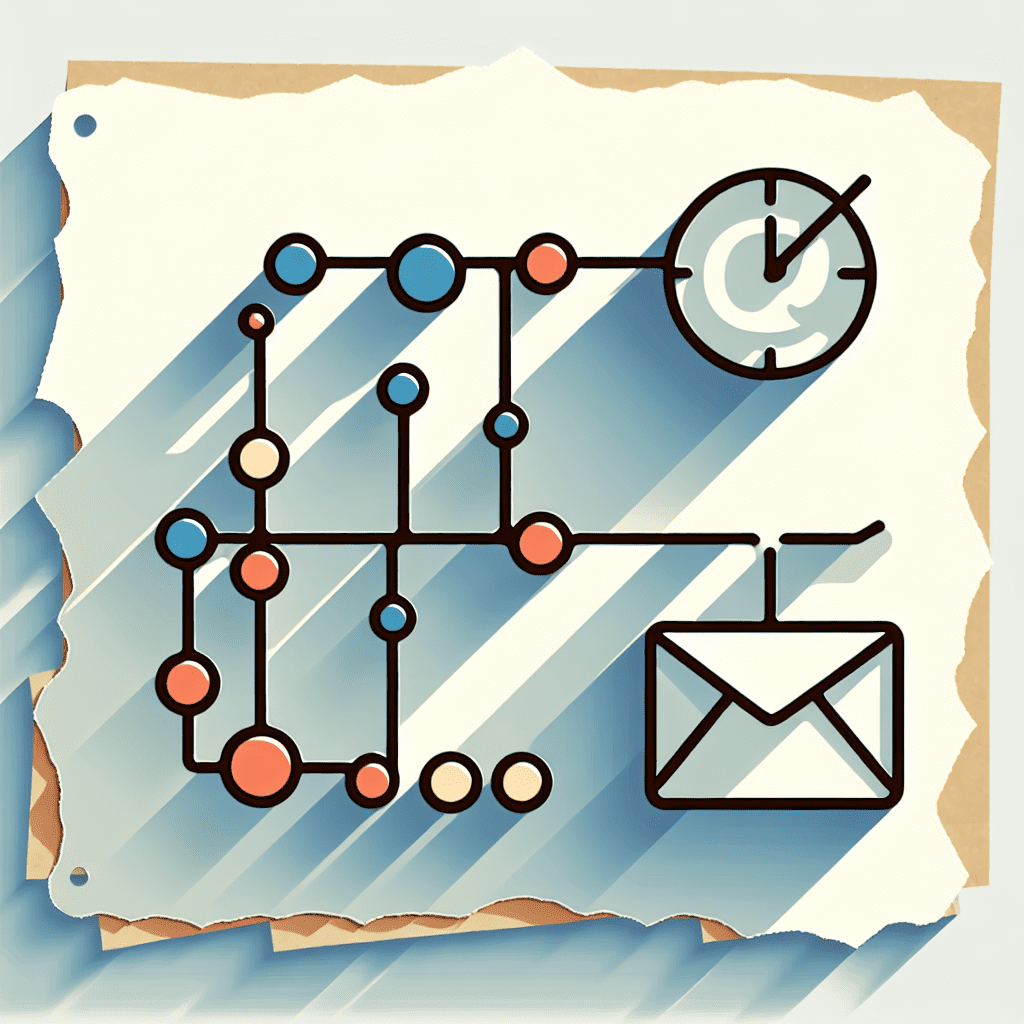Today we’re talking about drip campaigns. Not the kind you wear ironically to a music festival, but the kind that quietly nudges people toward buying your product while you sleep. It’s like having a polite, persistent salesperson who never gets tired, never forgets a follow-up, and doesn’t ask for commission.
So, what exactly is a drip campaign?
Picture this: someone signs up for your newsletter. They get a friendly welcome email right away, then a helpful how-to guide a couple days later, maybe a testimonial from a happy customer the following week. That’s a drip campaign—a timed sequence of messages sent automatically, based on user behavior or where they are in your funnel.
The idea is to keep the conversation going without overwhelming anyone. You’re not blasting emails into the void; you’re sending the right message, to the right person, at the right time. And yes, that phrase gets overused, but here it actually means something.
Now, let’s break it down.
Every drip campaign has three moving parts:
1. The trigger. This is what sets the whole thing off. Could be someone filling out a form, buying a product, abandoning their cart, or even just clicking a link in a previous email.
2. The message. This is the content you send. Usually email, but it could also be an SMS, a push notification, or even an in-app message if you want to get fancy.
3. The timing. This is when that message gets sent. Maybe it’s 10 minutes after the trigger; maybe it’s two days later, but only if they didn’t open the first one. Timing is where the magic happens, or where it all falls apart.
Why do these campaigns actually work?
You’re not just automating for convenience; you’re tapping into psychology.
Ever heard of the Zeigarnik Effect? It’s the idea that people remember incomplete tasks more than completed ones. So when someone gets that first email and doesn’t finish signing up or buying, their brain quietly nags them about it. A well-timed follow-up keeps that mental tab open.
And then there’s the idea of micro-moments. Google talks about them a lot: those tiny windows when people are most open to influence, like when they’re researching a product or trying to solve a problem. Drip campaigns are designed to show up right then, not three days later when the moment’s passed.
And the numbers? They’re not subtle. Campaign Monitor found that drip campaigns pull in 18 times more revenue than one-off emails. Click-through rates? Up 119 percent. That’s not a typo.
Different drips for different folks.
Not every campaign needs to look the same. Here are a few common types:
- Lead nurturing drips: These are the
slow-cookers of the email world. Great for B2B, where the sales cycle is longer. Think ebooks, case studies, whitepapers—sent over time to warm people up. - Onboarding drips: Perfect for SaaS or apps. You’ve got someone’s attention; now help them get value fast. Send setup tips, feature highlights, maybe a quick win or two.
- Re-engagement drips: For users who’ve ghosted you. Maybe they haven’t logged in or bought anything in a while. A gentle nudge, a special offer, or even just a “Hey, still there?” can bring them back.
- Abandoned cart drips: The classic. Someone adds stuff to their cart and bails. You send a reminder, then maybe a review from another customer, then a limited-time discount. It works more often than you’d think.
- Post-purchase drips: After someone buys, don’t just vanish. Send tips on how to use the product, suggest related items, or ask for a review. It’s how you turn one-time buyers into repeat customers.
Build it smart. Don’t just build it fast.
If you want your drip campaign to actually work, you’ve got to do more than set up a few emails and hope for the best.
First, segment your audience. Not everyone should get the same messages. Someone who just found your site doesn’t need the same info as someone who’s already bought twice. Tools like HubSpot and ActiveCampaign make this kind of segmentation pretty painless.
Next, map the journey. What does someone need to know at each stage—awareness, consideration, decision, loyalty? Your messages should match that progression; otherwise, you’re just sending noise.
Personalize where you can. Use merge tags to include names or product info. Use branching logic so that if someone clicks one link, they get a different follow-up than someone who doesn’t. It’s not hard to set up, and it makes a difference.
Test everything. Subject lines, send times, email length, images, CTAs. You don’t have to guess what works. The data will tell you.
And don’t forget the technical stuff: verified sender domains, clean lists, and compliance with laws like CAN-SPAM and GDPR. Otherwise, your clever campaign ends up in spam or worse, in legal trouble.
What’s next? Smarter tools and more channels.
The newer platforms are getting pretty clever. Tools like Klaviyo and Iterable use predictive analytics to figure out when someone’s most likely to engage or buy. That means better timing, better results, and less guesswork.
Also, email isn’t the only game in town anymore. Omnichannel campaigns are growing fast. That means mixing email with SMS, push notifications, or even in-app messages. Done right, it feels seamless; done wrong, it’s just annoying. So tread carefully.
So, are drip campaigns worth it?
Yes. Absolutely. You’re not just setting up automation; you’re building relationships.
Done well, drip campaigns don’t just get clicks. They build trust. They guide people through the noise. And they do it while you’re off doing literally anything else.
Which, honestly, is kind of beautiful.
That’s the breakdown.
We’ll be back with more.
Until then, keep building.
– Perfect Sites Blog

